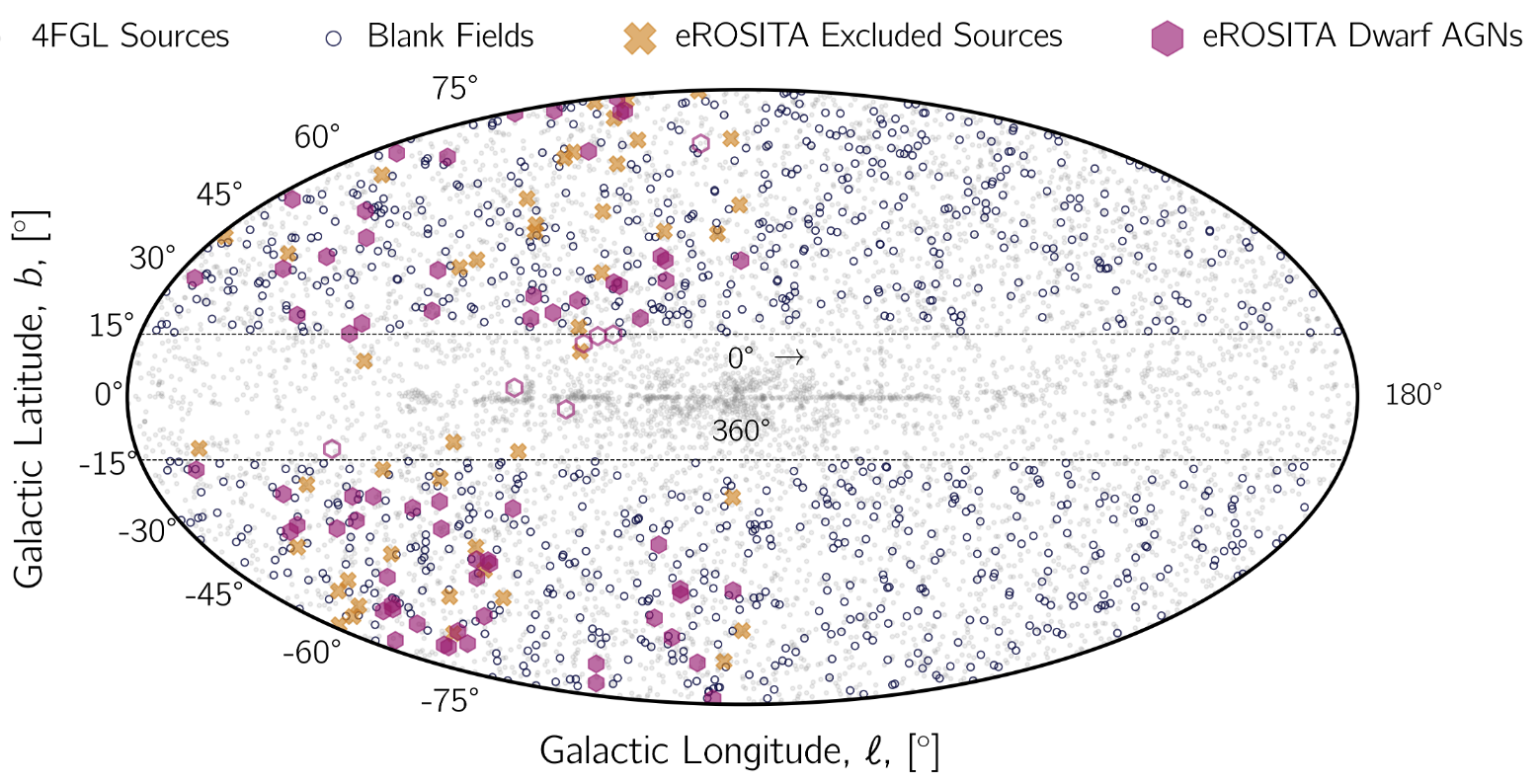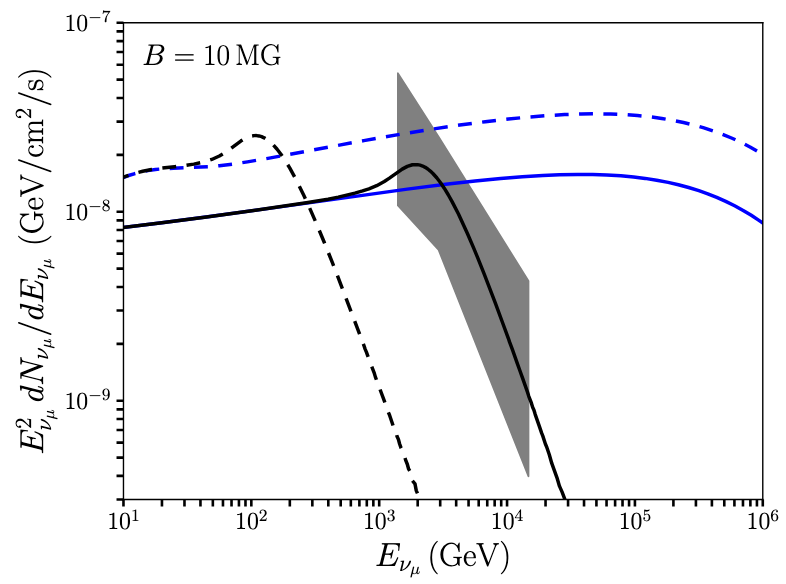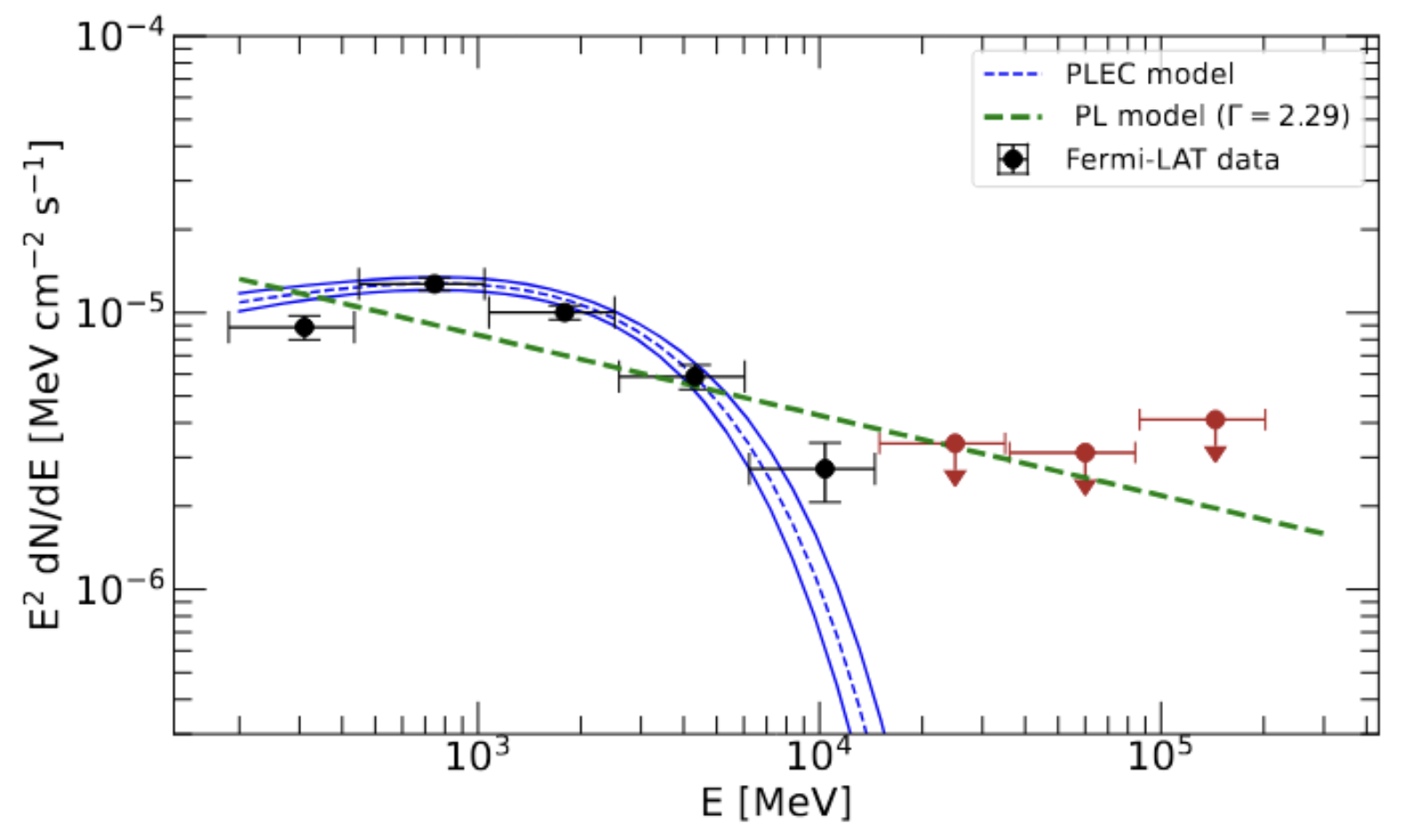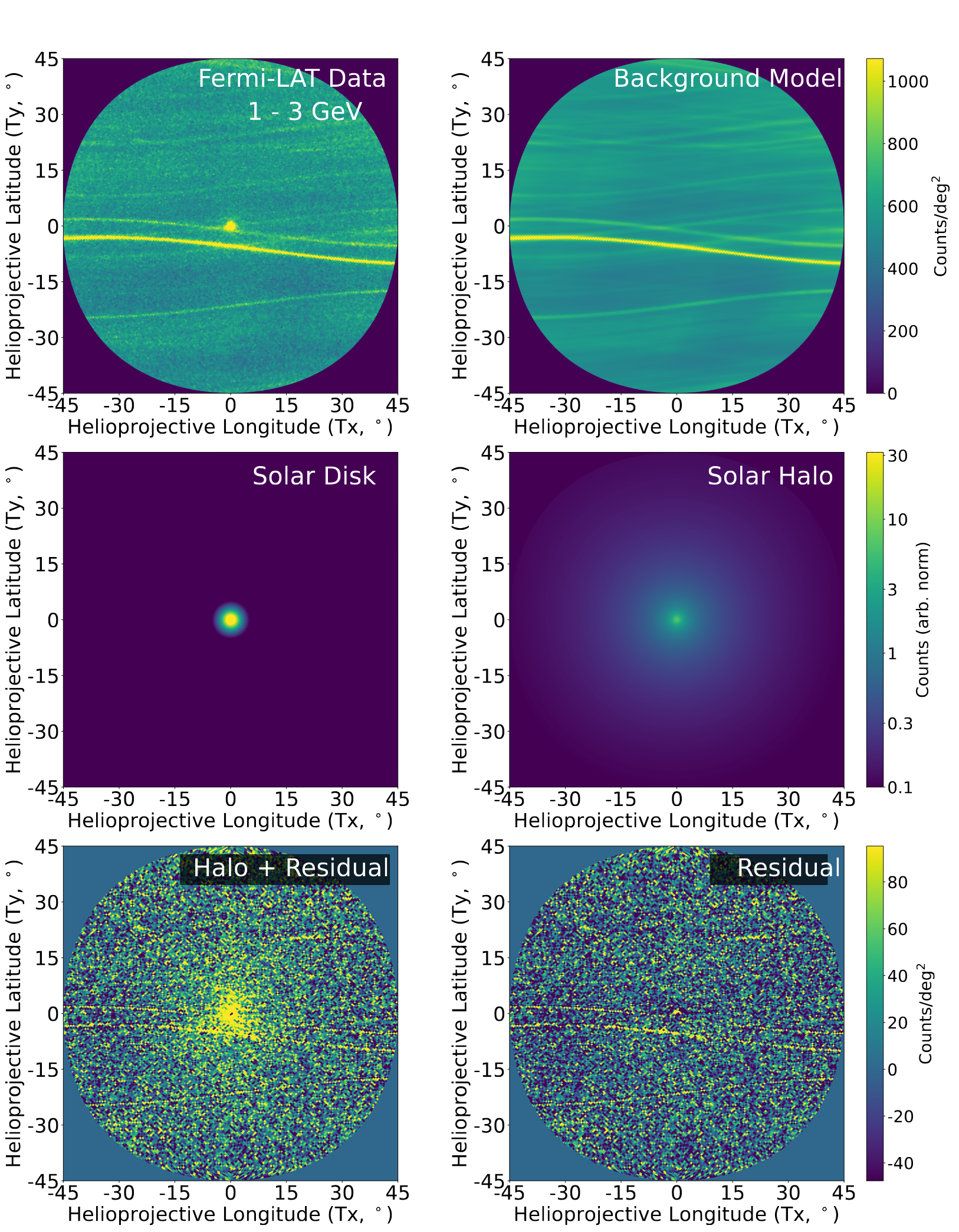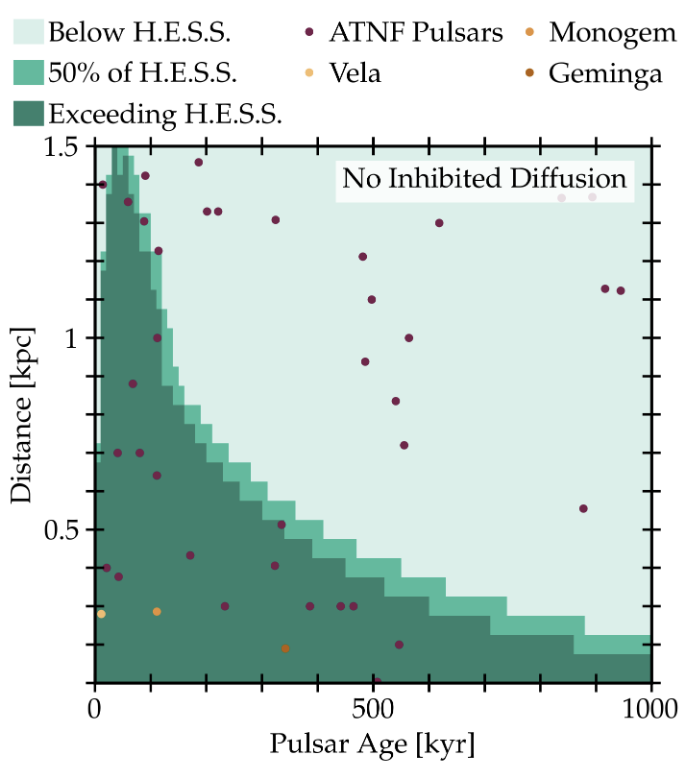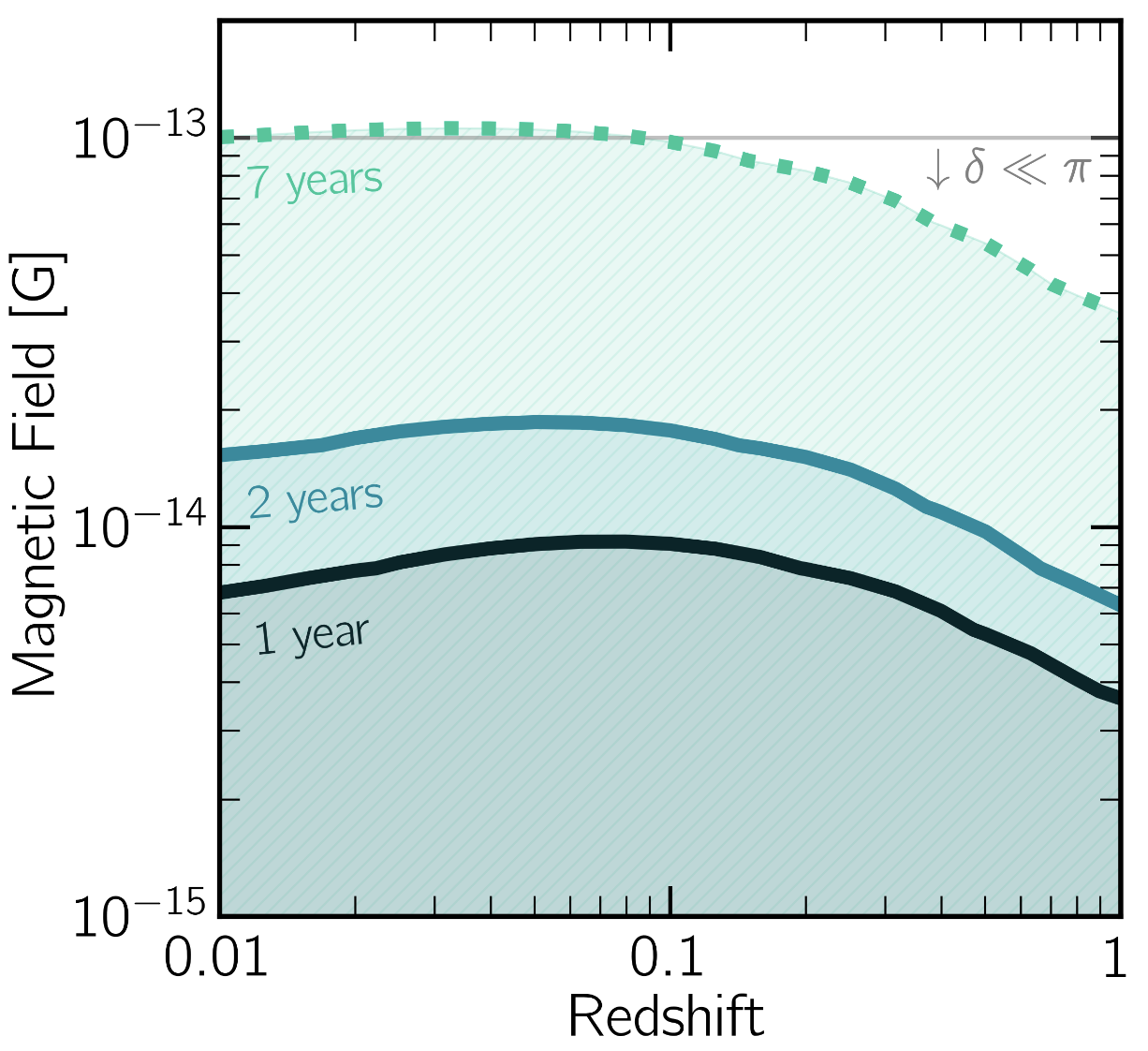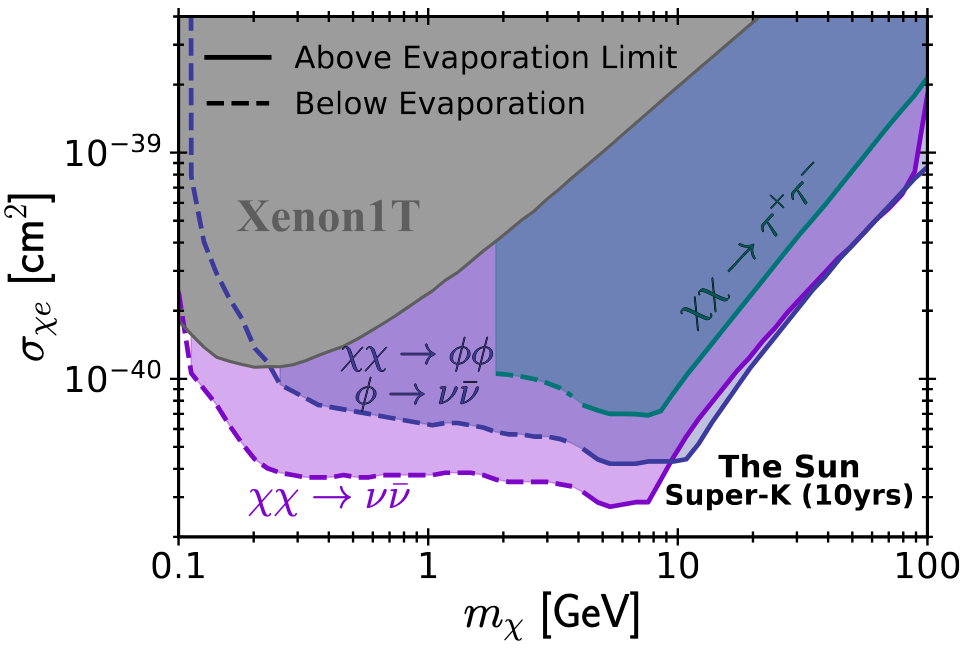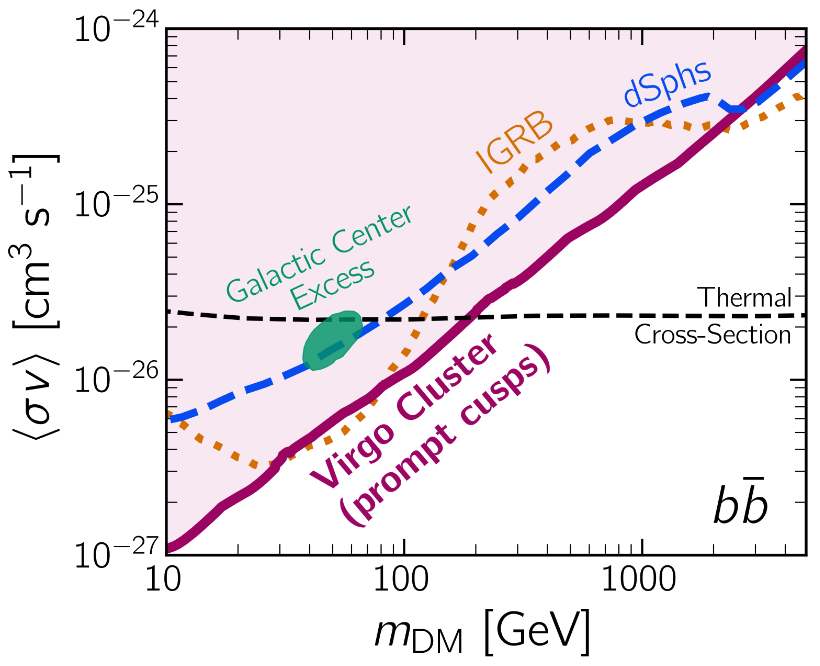127. Missing Beats: Dark Matter Silences Short-Period Cepheids in the Galactic Center
Djuna Croon, Tim Linden, Jeremy Sakstein
To Be Submitted
126. Are X-Ray Detected Active Galactic Nuclei in Dwarf Galaxies Gamma-Ray Bright?
Milena Crnogorčević, Tim Linden, Annika Peter
To Be Submitted
125. The Impact of Muon and Pion Cooling on the Neutrino Spectrum of NGC 1068
Carlos Blanco, Dan Hooper, Tim Linden, Elena Pinetti
To Be Submitted
124. Explosive Dispersal Outflows as a New Class of Fermi Gamma-Ray Sources: The Case of DR21
Paarmita Pandey, Stephen Lenker, Laura Lopez, Anna Rosen, Tim Linden, Todd Thompson, Stellar Offner, Katie Auchettl, Chris Hirata
To Be Submitted
123. INTEGRAL, eROSITA and Voyager Constraints on Light Bosonic Dark Matter: ALPs, Dark Photons, Scalars, B−L and Li−Lj Vectors
Thong Nguyen, Pedro de la Torre Luque, Isabelle John, Shyam Balaji, Pierluca Carenza, Tim Linden
To Be Submitted
122. First Observations of Solar Halo Gamma Rays Over a Full Solar Cycle
Tim Linden, Jung-Tsung Li, Bei Zhou, Isabelle John, Milena Crnogorčević, Annika Peter, John Beacom
Accepted By PRD
121. Every Nearby Energetic Pulsar Is Surrounded by a Region of Inhibited Diffusion
Isabelle John, Tim Linden
To Be Submitted
120. Looking for the γ-Ray Cascades of the KM3-230213A Neutrino Source
Milena Crnogorčević, Carlos Blanco, Tim Linden
Journal of Cosmology and Astroparticle Physics 10 (2025) 009
119. Super-Kamiokande Strongly Constrains Leptophilic Dark Matter Capture in the Sun
Thong Nguyen, Tim Linden, Pierluca Carenza, Axel Widmark
To Be Submitted
118. Gamma-Ray Observations of Galaxy Clusters Strongly Constrain Dark Matter Annihilation in Prompt Cusps
Milena Crnogorčević, Sten Delos, Nadia Kuritzén, Tim Linden
To Be Submitted
117. Heavy Axions Can Disrupt Gamma-Ray Bursts
Oindrila Ghosh, Sunniva Jacobsen, Tim Linden
Accepted by PRD
116. Millisecond Pulsars in Globular Clusters and Implications for the Galactic Center Gamma-Ray Excess
Aurelio Amerio, Dan Hooper, Tim Linden
Accepted by JCAP
115. Strong Constraints on Dark Photon and Scalar Dark Matter Decay from INTEGRAL and AMS-02
Thong Nguyen, Isabelle John, Tim Linden, Tim Tait
To Be Submitted
114. Galactic Gas Models Strongly Affect the Determination of the Diffusive Halo Height
Pedro De la Torre Luque, Tim Linden
Journal of Cosmology and Astroparticle Physics 02 062 (2025)
113. X-Ray Constraints on Dark Photon Tridents
Tim Linden, Thong Nguyen, Tim Tait
To Be Submitted
112. Dark Branches of Immortal Stars at the Galactic Center
Isabelle John, Rebecca Leane, Tim Linden
Physical Review D. 112 (2025) 2, 023028
111. Gamma-ray Emission from a Young Star Cluster in the Star-Forming Region RCW 38
Paarmita Pandey, Laura Lopez, Anna Rosen, Todd Thompson, Tim Linden, Ian Blackstone, Lachlan Lancaster
Astrophysical Journal 976 1 98 (2024)
110. Cosmic-Ray Propagation Models Elucidate the Prospects for Antinuclei Detection
Pedro De la Torre Luque, Martin Winkler, Tim Linden
Journal of Cosmology and Astroparticle Physics 10 017 (2024)
109. Indirect Searches for Dark Photon-Photon Tridents in Celestial Objects
Tim Linden, Thong Nguyen, Tim Tait
To Be Submitted
108. Antiproton Bounds on Dark Matter Annihilation from a Combined Analysis Using the DRAGON2 Code
Pedro De la Torre Luque, Martin Winkler, Tim Linden
Journal of Cosmology and Astroparticle Physics 10.1088 104 2024
107. Dark Matter Scattering Constraints from Observations of Stars Surrounding Sgr A*
Isabelle John, Rebecca Leane, Tim Linden
Physical Review D 109 12 123041 (2024)
106. Strong Constraints on Dark Matter Annihilation in Ursa Major III/UNIONS 1
Milena Crnogorčević, Tim Linden
Physical Review D 109 8 083018 (2024)
105. Gamma-ray lines in 15 years of Fermi-LAT data: New constraints on Higgs portal dark matter
Pedro De la Torre Luque, Tim Linden, Juri Smirnov
Physical Review D 109 (2024) 4, L041301
104. Limits on dark matter annihilation in prompt cusps from the isotropic gamma-ray background
M. Sten Delos, Michael Korsmeier, Axel Widmark, Carlos Blanco, Tim Linden, Simon White
Physical Review D 109 8 083512 (2024)
103. On the Neutrino and Gamma-Ray Emission from NGC 1068
Carlos Blanco, Dan Hooper, Tim Linden, Elena Pinetti
Accepted by PRD
102. Accurate Inverse-Compton Models Strongly Enhance Leptophilic Dark Matter Signals
Isabelle John, Tim Linden
Physical Review D 108 10 103022
101. Where are the Cascades from Blazar Jets? An Emerging Tension in the Gamma-Ray Sky
Carlos Blanco, Oindrila Ghosh, Sunniva Jacobsen, Tim Linden
Submitted to PRL
100. On the gamma-ray emission from the core of the Sagittarius dwarf galaxy
Addy Evans, Louis Strigari, Oskar Svenborn, Andrea Albert, Pat Harding, Dan Hooper, Tim Linden, Andrew Pace
Monthly Notices of the Royal Astronomical Society 524 3 4574
99. The Cherenkov Telescope Array Will Test Whether Pulsars Generate the Galactic Center Gamma-Ray Excess
Celeste Keith, Dan Hooper, Tim Linden
Physical Review D 107 10, 103001
98. The TeV Sun Rises: Discovery of Gamma rays from the Quiescent Sun with HAWC
HAWC Collaboration
Physical Review Letters 131, 051201 (2023)
97. Cosmic Ray Antihelium from a Strongly Coupled Dark Sector
Martin Winkler, Pedro De la Torre Luque, Tim Linden
Physical Review D 107 12 123035 (2023)
96. White Dwarfs in Dwarf Spheroidal Galaxies: A New Class of Compact-Dark-Matter Detectors
Juri Smirnov, Ariel Goobar, Tim Linden, Edvard Mörtsell
Physical Review Letters 132 15 151401 (2024)
95. Weighing the Local Interstellar Medium using Gamma Rays and Dust
Axel Widmark, Michael Korsmeier, Tim Linden
Physical Review Letters 130 161002 (2023)
94. Pulsars Do Not Produce Sharp Features in the Cosmic-Ray Electron and Positron Spectra
Isabelle John, Tim Linden
Physical Review D 107 10, 103021 (2023)
93. Anisotropic diffusion cannot explain TeV halo observations
Pedro De la Torre Luque, Ottavio Fornieri, Tim Linden
Physical Review D 106 123033
92. The Sensitivity of Future Gamma-Ray Telescopes to Primordial Black Holes
Celeste Keith, Dan Hooper, Tim Linden, Rayne Liu
Physical Review D 106 (2022) 4, 043003
91. Constraining Axion-Like Particles with HAWC Observations of TeV Blazars
Sunniva Jacobsen, Tim Linden, Katherine Freese
Journal of Cosmology and Astroparticle Physics 10 009
90. Extraterrestrial Axion Search with the Breakthrough Listen Galactic Center Survey
Joshua Foster, Samuel Witte, Matthew Lawson, Tim Linden, Vishal Gajjar, Christoph Weniger, Ben Safdi
Physial Review Letters 129, 251102 (2022)
89. Self-Generated Cosmic-Ray Turbulence Can Explain the Morphology of TeV Halos
Payel Mukhopadhyay, Tim Linden
Physical Review D 105, 123008
88. Dark Matter Microhalos in the Solar Neighborhood: Pulsar Timing Signatures of Early Matter Domination
Sten Delos, Tim Linden
Physical Review D 105 123514
87. Cosmic-Ray Positrons Strongly Constrain Leptophilic Dark Matter
Isabelle John, Tim Linden
Journal of Cosmology and Astroparticle Physics 12 2021 007
86. Response to Comment on: "Dark Matter Annihilation Can Produce a Detectable Antihelium Flux through Λb Decays
Martin Winkler, Tim Linden
ArXiv Only
85. Gamma-Rays from Star Forming Activity Appear to Outshine Misaligned Active Galactic Nuclei
Carlos Blanco, Tim Linden
Journal of Cosmology and Astroparticle Physics 02 003
84. First Analysis of Jupiter in Gamma Rays and a New Search for Dark Matter
Rebecca Leane, Tim Linden
Physical Review Letters 131 7 071001
83. Evidence of TeV Halos Around Millisecond Pulsars
Dan Hooper, Tim Linden
Physical Review D 105, 103013
82. Celestial-Body Focused Dark Matter Annihilation Throughout the Galaxy
Rebecca Leane, Tim Linden, Payel Mukhopadhyay, Natalia Toro
Physical Review D, 103 (2021) 7
81. The Highest Energy HAWC Sources are Leptonic and Powered by Pulsars
Takahiro Sudoh, Tim Linden, Dan Hooper
Journal of Cosmology and Astroparticle Physics 08 (2021) 010
80. First Observations of Solar Disk Gamma Rays over a Full Solar Cycle
Tim Linden, John Beacom, Annika Peter, Benjamin Buckman, Bei Zhao, Guanying Zhu
Physical Review D 105 (2022) 6, 063013
79. Constraining the Charge-Sign and Rigidity-Dependence of Solar Modulation
Ilias Cholis, Dan Hooper, Tim Linden
Journal of Cosmology and Astroparticle Physics 10 051
78. Dark Matter Annihilation Can Produce a Detectable Antihelium Flux through Λb Decays
Martin Wolfgang Winkler, Tim Linden
Physical Review Letters 126 101101
77. Millisecond Pulsars Modify the Radio-SFR Correlation in Quiescent Galaxies
Takahiro Sudoh, Tim Linden, John Beacom
Physical Review D 103 083017
76. Anti-Deuterons and Anti-Helium Nuclei from Annihilating Dark Matter
Ilias Cholis, Tim Linden, Dan Hooper
Physical Review D 102 103019
75. Breaking a Dark Degeneracy: The gamma-ray signature of early matter domination
M. Sten Delos, Tim Linden, Adrienne Erickcek
Physical Review D 100 123546
74. Cosmic Rays and Magnetic Fields in the Core and Halo of the Starbust M82: Implications for Galactic Wind Physics
Benjamin Buckman, Tim Linden, Todd Thompson
Monthly Notices of the Royal Astronomical Society 494 2679
73. A Robust Method for Treating Astrophysical Mismodeling in Dark Matter Annihilation Searches of Dwarf Spheroidal Galaxies
Tim Linden
Physical Review D 043017
72. A Robust Excess in the Cosmic-Ray Antiproton Spectrum: Implications for Annihilating Dark Matter
Ilias Cholis, Tim Linden, Dan Hooper
Physical Review D 99 103026
71. TeV Halos are Everywhere: Prospects for New Discoveries
Takahiro Sudoh, Tim Linden, John Beacom
Physical Review D 100 043016
70. Active Galactic Nuclei and the Origin of IceCube’s Diffuse Neutrino Flux
Dan Hooper, Tim Linden, Abby Vieregg
Journal of Cosmology and Astroparticle Physics 02 012
69. Constraints on Spin-Dependent Dark Matter Scattering with Long-Lived Mediators from TeV Observations of the Sun with HAWC
HAWC Collaboration
Physical Review D 98 123012
68. First HAWC Observations of the Sun Constrain Steady TeV Gamma-Ray Emission
HAWC Collaboration
Physical Review D 98 123011
67. Self-Generated Cosmic-Ray Confinement in TeV Halos: Implications for TeV γ-ray Emission and the Positron Excess
Carmelo Evoli, Tim Linden, Giovanni Morlino
Physical Review D 98 063017
66. Evidence for Cosmic-Ray Escape in the Small Magellanic Cloud using Fermi Gamma-rays
Laura Lopez, Katie Auchettl, Tim Linden, Alberto Bolatto, Todd Thompson, Enrico Ramirez-Ruiz
The Astrophysical Journal 867 44
65. An Unexpected Dip in the Solar Gamma-Ray Spectrum
Qing-Wen Tang, Kenny Ng, Tim Linden, Bei Zhou, John Beacom, Annika Peter
Physical Review D, 98 063019
64. Millisecond Pulsars, TeV Halos, and Implications for the Galactic Center Gamma-Ray Excess
Dan Hooper, Tim Linden
Physical Review D 98 043005
63. Evidence for a New Component of High-Energy Solar Gamma-Ray Production
Tim Linden, Bei Zhou, John Beacom, Annika Peter, Kenny Ng, Qing-Wen Tang
Physical Review Letters 121 131103
62. Measuring the Local Diffusion Coefficient with HESS Observations of High-Energy Electrons
Dan Hooper, Tim Linden
Physical Review D 98 083009
61. Comment on "Characterizing the Population of Pulsars in the Galactic Bulge with the Fermi Large Area Telescope" [arXiv: 1705.00009v1]
Richard Bartels, Dan Hooper, Tim Linden, Siddharth Mishra-Sharma, Nick Rodd, Ben Safdi, Tracy Slatyer
Physics of the Dark Universe 20 88 2018
60. Pulsar TeV Halos Explain the TeV Excess Observed by Milagro
Tim Linden, Ben Buckman
Physical Review Letters 120 121101
59. Searching for Dark Matter with Neutron Star Mergers and Quiet Kilonovae
Joe Bramante, Tim Linden, Yu-Dai Tsai
Physical Review D 97 055016
58. TeV Gamma Rays from Galactic Center Pulsars
Dan Hooper, Ilias Cholis, Tim Linden
Physics of the Dark Universe 21 40 2018
57. IceCube and HAWC Constraints on Very-High-Energy Emission from the Fermi Bubbles
Ke Fang, Meng Su, Tim Linden, Kohta Murase
Physical Review D 96 123007
56. Dark Kinetic Heating of Neutron Stars: An Infrared Window On WIMPs, SIMPs, and Higgsinos
Masha Baryakhtar, Joe Bramante, Shirley Li, Tim Linden, Nirmal Raj
Physical Review Letters 119 131801
55. Using HAWC to Detect Invisible Pulsars
Tim Linden, Katie Auchettl, Joseph Bramante, Ilias Cholis, Ke Fang, Dan Hooper, Tanvi Karwal, Shirley Li
Physical Review D 96 103016
54. HAWC Observations Strongly Favor Pulsar Interpretations of the Cosmic-Ray Positron Excess
Dan Hooper, Ilias Cholis, Tim Linden, Ke Fang
Physical Review D 96 103013
53. Evidence for the Stochastic Acceleration of Secondary Antiprotons by Supernova Remnants
Ilias Cholis, Dan Hooper, Tim Linden
Physical Review D 95 123007
52. Low Mass X-Ray Binaries in the Inner Galaxy: Implications for MSPs and the GeV Excess
Daryl Haggard, Craig Heinke, Dan Hooper, Tim Linden
Journal of Cosmology and Astroparticle Physics 1705 05 056
51. Star-Forming Galaxies Significantly Contribute to the Isotropic Gamma-Ray Background
Tim Linden
Physical Review D 96 083001
50. The Angular Power Spectrum of diffuse gamma-rays measured by Fermi and DM constraints
M. Fornasa, A. Cuoco, J. Zavala, J. Gaskins, M. Sanchez-Conde, G. Gomez-Vargas, E. Komatsu, Tim Linden, F. Prada, F. Zandenel, A. Morselli
Physical Review D 94, 123005
49. The Gamma-Ray Pulsar Population of Globular Clusters: Implications for the GeV Excess
Dan Hooper, Tim Linden
Journal of Cosmology and Astroparticle Physics 1608 08 018
48. Indirect Detection Constraints on s and t Channel Simplified Models of Dark Matter
Linda Carpenter, Russell Colburn, Jessica Goodman, Tim Linden
Physical Review D 94 055027
47. Radio Galaxies Dominate the High-Energy Diffuse Gamma-Ray Background
Dan Hooper, Tim Linden, Alejandro Lopez
Journal of Cosmology and Astroparticle Physics 1608 08 019
46. The High-Energy Tail of the Galactic Center Gamma-Ray Excess
Tim Linden, Nicholas Rodd, Benjamin Safdi, Tracy Slatyer
Physical Review D 94, 103013
45. Improved Cosmic-Ray Injection Models and the Galactic Center Gamma-Ray Excess
Eric Carlson, Tim Linden, Stefano Profumo
Physical Review D 94 063504
44. Is the Gamma-Ray Source J2212.5+0703 A Dark Matter Subhalo?
Bridget Bertoni, Dan Hooper, Tim Linden
Journal of Cosmology and Astroparticle Physics 1609 05 049
43. On the R-Process Enrichment of Dwarf Spheroidal Galaxies
Joseph Bramante, Tim Linden
The Astrophysical Journal 826 1 57
42. A Predictive Analytic Model for the Solar Modulation of Cosmic Rays
Ilias Cholis, Dan Hooper, Tim Linden
Physical Review D 93 4 043016
41. Putting Things Back Where They Belong: Tracing Cosmic-Ray Injection with H2
Eric Carlson, Tim Linden, Stefano Profumo
Physical Review Letters 117 111101
40. Known Radio Pulsars Do Not Contribute to the Galactic Center Gamma-Ray Excess
Tim Linden
Physical Review D 93 6 063003
39. Cluster Mergers and the Origin of the ARCADE-2 Excess
Ke Fang, Tim Linden
Journal of Cosmology and Astroparticle Physics 1610 10 004
38. The Galactic Center GeV Excess from a Series of Leptonic Cosmic-Ray Outbursts
Ilias Cholis, Carmelo Evoli, Francesca Calore, Tim Linden, Christoph Weniger, Dan Hooper
Journal of Cosmology and Astroparticle Physics 1512 12 005
37. Examining the Fermi-LAT Third Source Catalog in Search of Dark Matter Subhalos
Bridget Bertoni, Dan Hooper, Tim Linden
Journal of Cosmology and Astroparticle Physics 1512 12 035
36. On the Gamma-Ray Emission from Reticulum II and Other Dwarf Galaxies
Dan Hooper, Tim Linden
Journal of Cosmology and Astroparticle Physics 1509 09 016
35. The Galactic Center Excess in Gamma-Rays from Annihilation of Self-Interacting Dark Matter
Manoj Kaplinghat, Tim Linden, Haibo Yu
Physical Review Letters, 114 211303
34. On the Formation of Ultra-Luminous X-Ray Sources with NS Accretors: The Case of M82-X2
Tassos Fragos, Tim Linden, Vicky Kalogera, Panos Sklias
The Astrophysical Journal Letters, 802 2041
33. The Anisotropy of the Extragalactic Radio Background from Dark Matter
Ke Fang, Tim Linden
Physical Review D 91 083501 (2015)
32. What Does the PAMELA Antiproton Spectrum Tell Us About Dark Matter?
Dan Hooper, Tim Linden, Philipp Mertsch
Journal of Cosmology and Astroparticle Physics 03 021 (2015)
31. Improving the Sensitivity to Dark Matter Annihilation in Dwarf Spheroidal Galaxies
Eric Carlson, Dan Hooper, Tim Linden
Physical Review D, 91 061302 (2015)
30. A Critical Reevaluation of Radio Constraints on Annihilating Dark Matter
Ilias Cholis, Dan Hooper, Tim Linden
Physical Review D, 91 083507 (2015)
29. Challenges in Explaining the Galactic Center Gamma-Ray Excess with Millisecond Pulsars
Ilias Cholis, Dan Hooper, Tim Linden
Journal of Cosmology and Astroparticle Physics, 06 043 (2015)
28. A New Determination of the Spectrum and Luminosity Function of Millisecond Pulsars
Ilias Cholis, Dan Hooper, Tim Linden
Submitted to PRD
27. The Circular Polarization of Pulsar Wind Nebulae and the Cosmic-Ray Positron Excess
Tim Linden
The Astrophysical Journal 799 200 (2015)
26. Detecting Dark Matter with Imploding Pulsars in the Galactic Center
Joseph Bramante, Tim Linden
Physical Review Letters, 113 191301
25. Searching for Dark Matter Annihilation in the Smith High-Velocity Cloud
Alex Drlica-Wagner, German Gomez-Vargas, Jack Hewitt, Tim Linden, Luigi Tibaldo
The Astrophysical Journal, 790 24
24. Is the Ultra-High Energy Cosmic-Ray Excess Correlated with IceCube Neutrinos?
Ke Fang, Toshihiro Fujii, Tim Linden, Angela Olinto
The Astrophysical Journal, 794 126
23. The Characterization of the Gamma-Ray Signal from the Central Milky Way
Tansu Daylan, Doug Finkbeiner, Dan Hooper, Tim Linden, Stephen Portillo, Nicholas Rodd, Tracy Slatyer
Physics of the Dark Universe 12 2016 1
22. Antihelium from Dark Matter
Eric Carlson, Adam Coogan, Tim Linden, Stefano Profumo, Alejandro Ibarra, Sebastian Wild
Physical Review D, 89 076005
21. Tying Dark Matter to Baryons with Self-Interactions
Manoj Kaplinghat, Ryan Keeley, Tim Linden, Haibo Yu
Physical Review Letters, 113 021302 (2014)
20. Pulsars Cannot Account for the Inner Galaxy's GeV Excess
Dan Hooper, Ilias Cholis, Tim Linden, Jennifer Siegal-Gaskins, Tracy Slatyer
Physical Review D, 88 083009
19. A Clustering Analysis of the 130 GeV Gamma-Ray Feature
Eric Carlson, Tim Linden, Stefano Profumo, Christoph Weniger
Physical Review D, 88 043006
18. Probing the Pulsar Origin of the Positron Fraction with Atmospheric Cherenkov Telescopes
Tim Linden, Stefano Profumo
The Astrophysical Journal, 772 18
17. Ultraluminous X-Ray Sources in the Most Metal-Poor Galaxies
A. Prestwich, M. Tsantaki, A. Zezas, F. Jackson, T. Roberts, R. Foltz, Tim Linden, V. Kalogera
The Astrophysical Journal 769 2 92
16. Testing the WMAP-Planck Haze with Spiral Galaxies
Eric Carlson, Dan Hooper, Tim Linden, Stefano Profumo
Journal of Cosmology and Astroparticle Physics, 1307 026 (2013)
15. Chandra Observations of the Collisional Ring Galaxy NGC 922
A. Prestwich, J. Galache, Tim Linden, V. Kalogera, A. Zezas, T. Roberts, R. Kilgard, A. Wolter, G. Trinchieri
The Astrophysical Journal, 747 2 150
14. Are Lines from Unassociated Gamma-Ray Sources Evidence for Dark Matter Annihilation?
Dan Hooper, Tim Linden
Physical Review D, 86 8 083532
13. Exploring the Nature of the GC Gamma-Ray Source with the Cherenkov Telescope Array
Tim Linden, Stefano Profumo
The Astrophysical Journal, 760 23 7
12. Gamma-Rays in the Fermi-LAT Data: Is it a Bubble?
Stefano Profumo, Tim Linden
Journal of Cosmology and Astroparticle Physics, 007 011
11. The Morphology of Hadronic Emission Models for the Galactic Center
Tim Linden, Elizabeth Lovegrove, Stefano Profumo
The Astrophysical Journal, 753 1 41
10. The Isotropic Radio Background and Annihilating Dark Matter
Dan Hooper, Alexander Belikov, Tesla Jeltema, Tim Linden, Stefano Profumo, Tracy Slatyer
Physical Review D, 86 10 103003
9. Anisotropies in the Gamma-Ray Background Measured by the Fermi-LAT
The Fermi-LAT Collaboration: A. Cuoco, Tim Linden, N. Maziotta, J. Siegal-Gaskins, V. Vitale, E. Komatsu
Physical Review D, 85 8 083007
8. On The Rarity of X-Ray Binaries with Naked Helium Donors
Tim Linden, Francesca Valsecchi, Vicky Kalogera
The Astrophysical Journal, 748 2 114
7. Origin of Gamma-Rays from the Galactic Center
Dan Hooper, Tim Linden
Physical Review D, 84 12 123005
6. Dark Matter and Synchrotron Emission from Galactic Center Radio Filaments
Tim Linden, Dan Hooper, Farhad Yusef-Zadeh
The Astrophysical Journal, 741 2 95
5. Gamma-Rays from the Galactic Center and the WMAP Haze
Dan Hooper, Tim Linden
Physics Review D, 83 8 083517 (2011)
4. The Effect of Starburst Metallicity on Bright X-Ray Binary Formation Pathways
Tim Linden, Vicky Kalogera, Jeremy Sepinsky, Andrea Prestwich, Andreas Zezas, Jay Gallagher
The Astrophysical Journal, 725 2 1984
3. The Morphology of Dark Matter Synchrotron Emission with Self-Consistent Diffusion Models
Tim Linden, Stefano Profumo, Brandon Anderson
Physical Review D, 82 6 228 063529
2. Systematic Effects in Extracting a ``Gamma-Ray Haze" from Spatial Templates
Tim Linden, Stefano Profumo
The Astrophysical Journal Letters, 714 2 228
1. Probing Electron-Capture Supernovae: X-Ray Binaries in Starbursts
Tim Linden, Jeremy Sepinsky, Vicky Kalogera, Chris Belczynski
The Astrophysical Journal, 699 2 1573 (2009)

